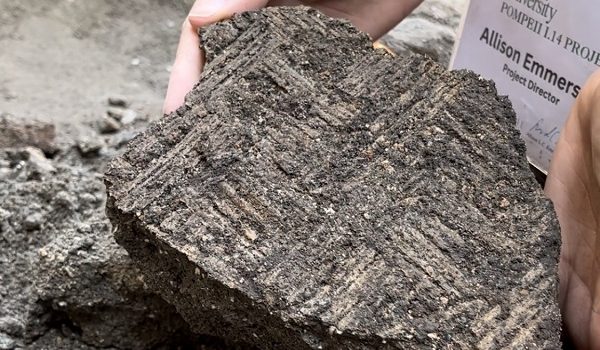The building complex at Pompeii I 14, 1/11–14 has now been the focus of two seasons of subsurface excavation by the Pompeii I.14 Project, a collaboration of Tulane University and the Parco Archeologico di Pompei. Beginning at the floor level of 79 CE, the excavation proceeds through the archaeological deposits below the final city, reconstructing its pre-eruptive history piece by piece. While still in its preliminary phases, the work has begun to reveal the complex development of this area, where discernible human activity dates back to the Italian Bronze Age. The southern side of Insula I 14 began to urbanize in the second century BCE but underwent its most intensive growth in the following century. By the first century CE, much of I 14, 1/11–14 was devoted to commerce, and several of its rooms appear to have functioned as a restaurant that provide elite-style, reclined dining. Shops along the southern façade, however, suggest commercial activities of other types, as do the most distinctive finds from the building thus far: a series of ancient reed mats, preserved in two separate rooms across two late phases of activity, and a large, shallow basin of the type appropriate for the soaking and crushing phases necessary for reed processing. Parts of the building, therefore, appear to have functioned as a matmaker’s workshop in the years prior to the eruption, likely part of a larger endeavor that included a previously known reed workshop in the building immediately to the north (I 14, 2). A now lost election notice that had once been painted alongside I 14, 14 preserves the name of one individual involved in this industry: it was sponsored by a woman called Tegeticula, ‘Little Reed Mat’.


